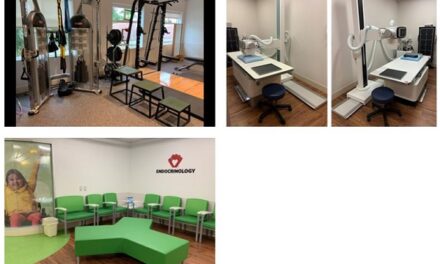Part 2 in a series on exploring hospital costs
In our series focusing on the economic realities of providing care in today’s hospitals, we take a look this month at the costs of running and maintaining trauma centers like the nationally-renowned Memorial Regional Hospital Level I Trauma Center in South Florida.
Trauma centers play a vital role within a community. By combining resources and expert personnel dedicated to trauma care, trauma centers such as Memorial Regional Hospital Level I Trauma Center can greatly impact a patient’s chances of survival. On average, Memorial sees about 2,800 trauma patients annually, and what happens behind the scenes of this care is nothing short of an orchestration of services that also employ highly skilled staff to provide everything from stroke intervention to cardiac services and surgery to help save lives.
“We take care of every type of injury, delivering the highest level of multidisciplinary trauma care available with all the needed surgical and non-surgical specialists for immediate care of the patient 24 hours a day, 7 days a week, 365 days a year,” says Zeff Ross, senior vice president and CEO of Memorial Regional Hospital.
Memorial’s trauma center is among one of the best across the nation because of its outcomes and preparedness.
“We provide an excellent service, and I believe that it’s a service many others admire,” notes Ross. “We’re a little different in South Florida because some of the types of injuries compared to other states and even other areas of Florida are unique to our area.”
For instance, the trauma center receives a number of motorcycle crashes. With its senior population, it has a higher incidence of geriatric trauma compared to other areas in the nation. Because of its proximity to various bodies of water and the Caribbean, it also sees a number of boating-related injuries, shark bites, and traumatic injury from other wildlife unique to Florida.
Biggest Drivers of Trauma Center Costs
There are many drivers when it comes to trauma center operating costs. At the top of the list is staffing. Ross quickly rattles off some of the personnel needed in place every hour of every day: a trauma surgeon, ED physician, neurosurgeon, trauma orthopedic surgeon, anesthesiologist, radiologist, Trauma Critical Care Intensivist, plastic surgeon (for facial surgery), maternity/OB physician, NICU physician, nursing, respiratory, radiology techs, social work and security. Personnel are also needed to staff a laboratory as well as a full service blood bank that can implement a mass transfusion protocol.
“There is not one area of the hospital that is not impacted and has to be ready every hour of every day,” says Ross.
Infrastructure is also a costly expense. Trauma centers need to ensure that when a trauma victim comes in, an operating room (OR), must always be available and equipped, including having the capability to house a neurological procedure, an open heart surgery or general surgery. ICUs and NICUs must be available as well. For an OR to stay open and be on standby for emergencies—there are opportunity costs associated with not using that OR.
“There are other peripheral equipment and things you don’t think about such as a helipad and the ongoing costs to maintain that helipad,” says Ross. “In addition, there are ongoing costs for training and education of everyone who staffs the trauma services. Everything I mentioned is not optional; they are mandated.”
The challenge for any trauma center, according to Ross, is to be well prepared and be well staffed, and along with this comes a commitment to retain and support continuous training to our trauma specialists and support staff.
“Funding and reimbursement are always issues for any trauma center, as is the cost of processing the care,” he says. “Adding value to that care and making sure the outcomes are what is anticipated, or are even better, is what we do best.”
Meeting the Demand and Giving Back to the Community
The first hour after an injury is what’s known as the Golden Hour, and patients have better outcomes when they come to a Level I Trauma Center like Memorial.
“The community recognizes the safety, quality, and service we provide,” says Ross. “We take the most complex, challenging patient in the worst possible condition with unknown co-morbidities and risk factors and provide a full continuum of care, safely, in a timely manner, and with the needed expertise,” says Ross.
Much of its success is due to the collaborative nature of the team in place, adds Ross.
“We have a team comprised of experts who wrk together strictly with one focus: caring for the patient,” he says. “That extends beyond trauma care, where the patient is not only admitted for further recuperation, but then needs rehabilitation through our Memorial Rehabilitation Institute. It’s about the full continuum of care—we’re ready whenever we are needed. No one ever wants to end up in a hospital, but when they need us, they are very glad we are here.”
Besides the demand for having this needed service, Memorial Regional Hospital Level I Trauma Center has made a great economic impact in South Florida. For starters, Memorial Healthcare System, in which Memorial Regional Hospital is the flagship of the system, is one of the largest employers in the area.
“The economic impact is a meaningful one for our community,” says Ross. “As a mission-driven organization committed to community healthcare, we are a financially responsible organization that gives back to the community in many ways, not just through top notch healthcare, but through a reduced millage rate and many community health fairs. Patients see us as the hospital of choice. We are able to take our revenues over expenses and reinvest them back into the community with even greater access to community and preventative programs and primary care centers that help provide better quality of life to the people we serve.”
Through its dedicated community relations programs, Memorial offers a number of preventative programs for stress management, diet, nutrition and exercise. It conducts health fairs in each of the communities it serves as well as a number of healthcare vans such as a mammography van to conduct free breast cancer screenings that are covered through grants.
“We host many national symposiums to educate the community and providers across the country on the latest updates in trauma, neurosurgery, cancer, pediatrics, and critical care, among other topics,” Ross said. “We try to provide as much education on preventative care as possible to help reduce hospital admissions and keep costs down.”
Technology’s Role in Trauma Care
Technology plays a role in the aim of reducing health care costs and producing better patient outcomes, particularly in today’s trauma centers.
For Ross, technology comes in many different forms. Some of these are items directly related to the trauma center such as equipment and innovations in minimally invasive surgical techniques for the diagnosis and treatment of trauma victims. Other approaches are more traditional such as community outreach and education, which may in turn help to eventually reduce the number of trauma cases.
“For example, years ago, no one ever used car safety belts,” says Ross. “There weren’t any—and then they were developed so people began to use them. Soon, they were mandated to have seat belts utilized.
Other related technology improvements that had an impact on decreasing the number of people with significant injuries included air bags and motorcycle helmets.”
Some technology on the lower level of the spectrum is education-focused. Memorial is always communicating with and educating the community on how to prevent becoming a victim of trauma.
“You don’t text and drive. You don’t drink and drive,” says Ross. “We have outreach programs in the community which we take to heart and make sure people understand the consequences of their behaviors. Most importantly, we’re there to answer their questions directly.”
In recent years, Memorial has incorporated the use of smartphone technology to improve communication with EMS personnel to provide better outcomes for stroke patients and ultimately save lives.
EMS personnel in the field use FaceTime, and the stroke teams at the ER can gather valuable patient information that enables them to be at ready when stroke victims arrive.
“With smartphone video technology and the information it provides to physicians, patients are arriving at the hospital and quickly getting treated, given much of the upfront communication regarding the patient’s vital signs and cause of injury has been established,” says Ross.
Finally, technology, such as electronic health records, has made a difference in avoiding unnecessary costs. EHRs can help reduce any redundancies of care. In other words, trauma physicians can often look up a patient’s medical history and risk factors through an EHR to more carefully, more correctly and more appropriately care for the patients safely.
“It can be something as simple as an allergy to a certain medication,” says Ross. “If we know about the allergy, a different medication is prescribed.
Technology, collaboration among medical teams and staff and community education and prevention makes a major difference in trauma care.”




























